October 2023 – by Randy Fornoff
Case Study – Consolidated Cooperatives of Scottsdale
Keywords: case study, extreme prep, paint failure, masonry paint peeling, elastomeric, rusted metal, metal paint
Project Description:
Consolidated Cooperatives of Scottsdale East is a fifteen-acre, seven-complex property built in 1963. Each of the seven complexes consists of three buildings and a pool house/laundry. Each complex is made up of twelve three-bedroom townhouses, four two-bedroom townhouses, sixteen two-bedroom apartments, sixteen single-bedroom apartments and two studio apartments around a swimming pool. In all, there are twenty-one residential buildings and seven swimming pool buildings.
The scope of the project was to repaint all exterior surfaces, metal stairs, metal railings and the metal pool gates and fencing and to coat all concrete wall caps with elastomeric waterproofing.
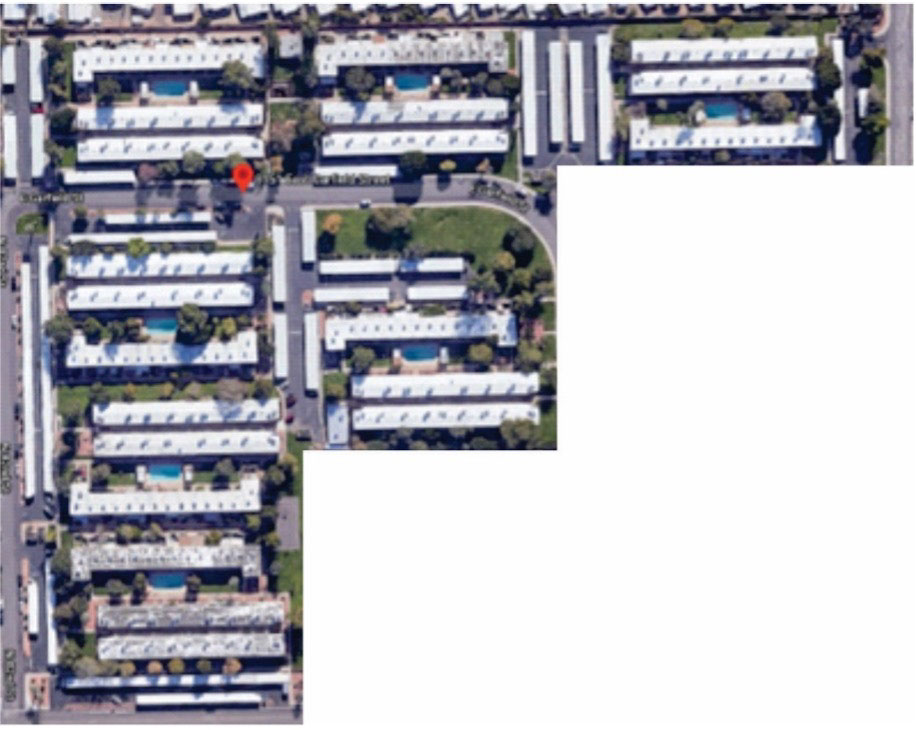
The construction materials include concrete block (CMU) walls, metal stairs and railings with concrete treads and metal structured walkways, metal gates and fencing. The complex was structurally sound, and the property manager and his maintenance team had been doing a good job. However, the property is 60 years old, and the paint job had major areas of coatings and substrate failures. There was massive peeling and curling of many coats of paint down to bare masonry substrate, plus badly rusting metal at the stairs and elevated walkways.
What was the extent of surface preparation for this project?
This project was estimated by our company president Randy Fornoff. With his extensive painting experience, Randy identified the challenges of restoring this property. It would require extreme preparation for painting. We carefully protected occupant personal property and adjacent unpainted surfaces. Then, using 3600 psi pressure washers with roto-tips, and hand tooling with mechanical wire brushing and scraping, we removed all the peeling and curling paint. Many walls were taken down to bare concrete.
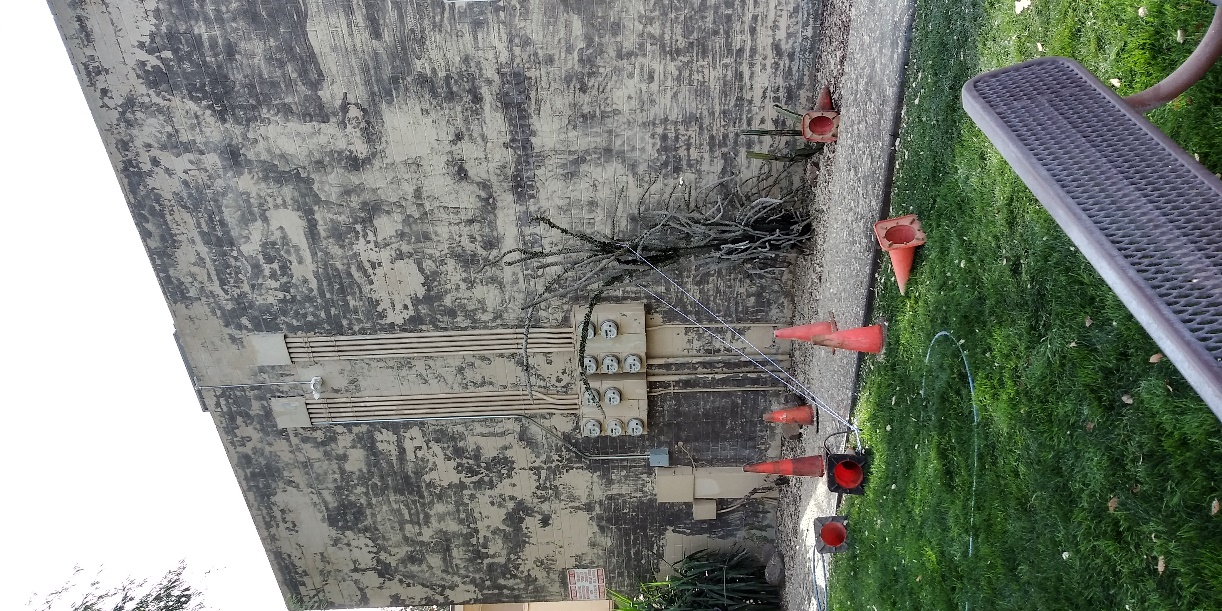
We sealed masonry cracks and exposed joints, where previously caulk had been pressure washed out or had failed, with high quality elastomeric caulk and elastomeric patching compound. All peeled masonry surfaces were filled and blended with bonding block filler to bridge the paint transitions.
Paint and stucco cannot hold back the hydrostatic pressure coming through the walls. The drying action of the heat and sun cause an increase of moisture transmission through any substrate. If the paint or coating, including stucco, cannot allow the liquid water or vapor to migrate through fast enough, the adhesion then fails. Peeling, bubbles, and delamination are the result.
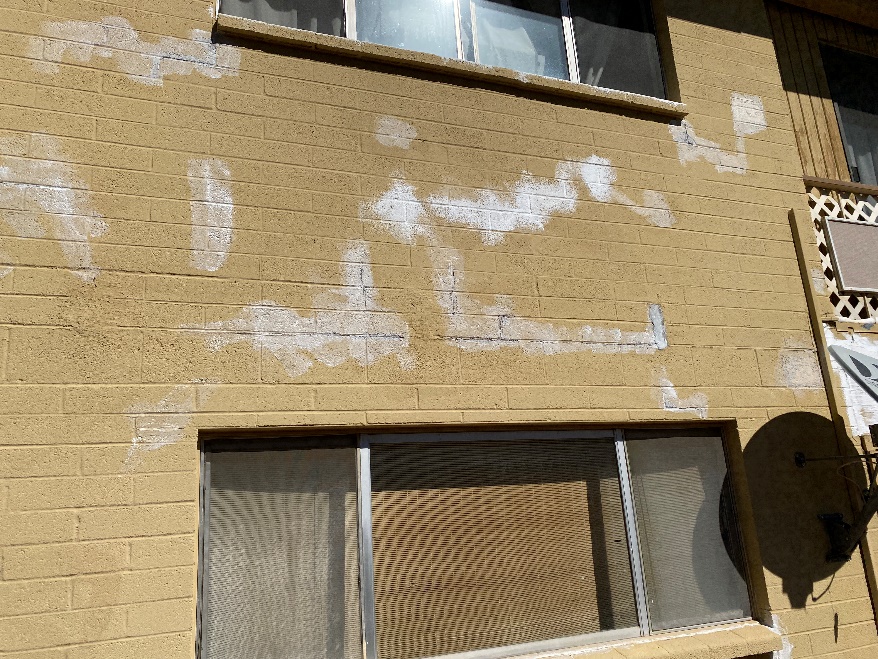
Which products were used in the priming process?
The bare concrete block was primed with Sherwin Williams PrimeRx Peel Bonding Primer or Zinsser PeelStop. These products smooth out the uneven surface left behind by the power washing. Chalky surfaces were power washed and then primed with Rust-Oleum Seal-Krete Original Concrete Paint, Sealer, Primer, and Finishing Product. Heavy rust was wire brush and treated with Benjamin Moore Corotech High Performance V180 Rust Arrestor. Light rust and bare metal were wire brushed and spot primed with Sherwin Williams Pro Industrial Pro-Cryl Universal Acrylic Primer. For information about these primers, read our blogpost.
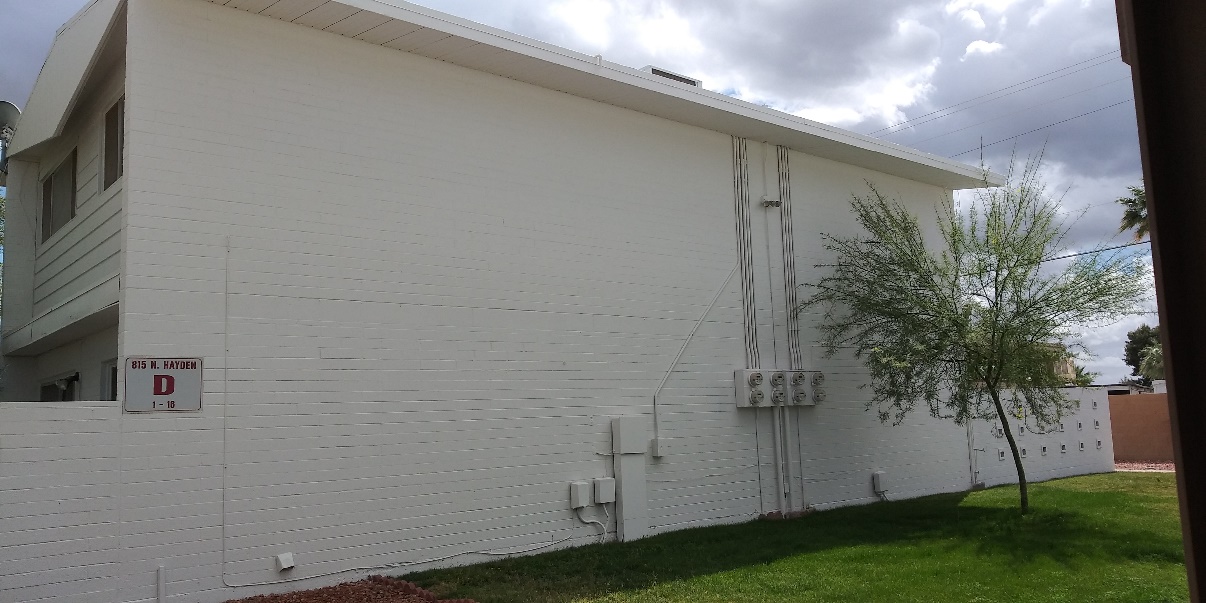
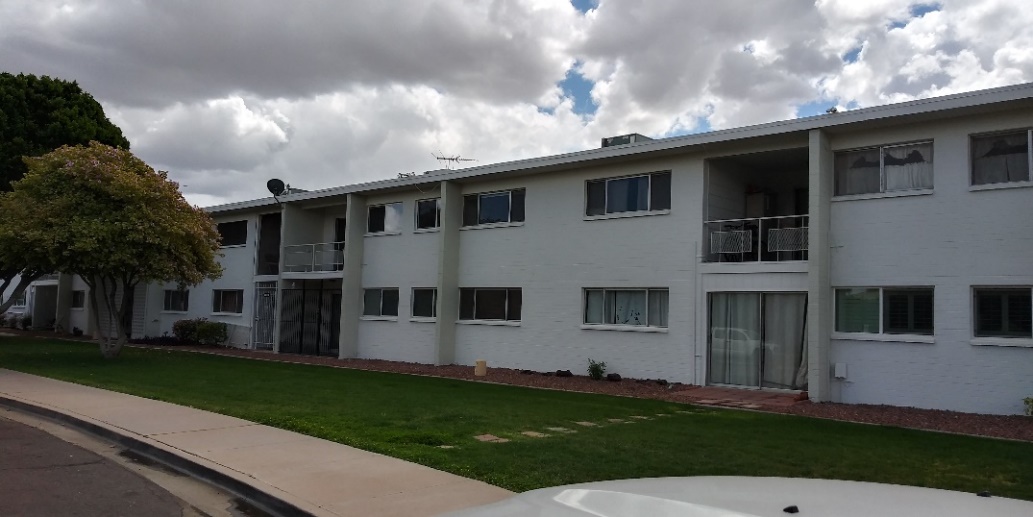
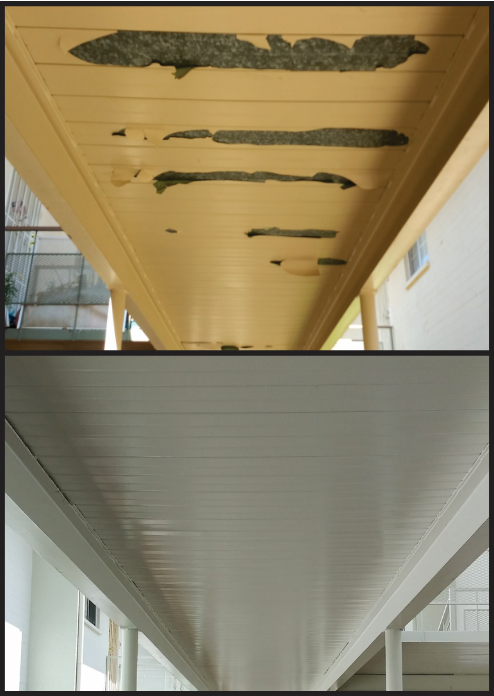
The metal surfaces were painted with two coats of Dunn Edwards 6233 Limestone in semi-gloss Aristoshield. See the before and after pictures above.
List and explain PCA Standards used in this project.
Because of the extreme degradation of the paint, it was vital for MTS Painting to educate property management and the Board of Directors to the extent of the preparation work necessary to accomplish before the surfaces could be repainted. To gain their confidence in our technical knowledge and their trust in our professionalism, we leaned heavily on the Painting Contractors Association Industry Standards. The following is a summary of the Industry Standards we relied on.
PCA P3 – Designation of Paint Color – The paint colors changed from the previous painting. The project is a large property with many decisions made about color placement by the property owners, the Board of Directors, and the onsite Property Manager. Soon after we started the project, a clamor arose that we were painting the wrong color. We did have to change the color.
Fortunately for us, we had painted the color specified in the work order. It was not our error.
PCA P4 – Responsibility for Inspection and Acceptance of Surfaces Prior to Painting and Decorating – We leaned on this standard when discussing the terms of warranting the project. Because of the extreme degradation of the previous painting, we limited customers’ expectation for the final product of our work.
PCA P7 – Job Sequencing – The sequencing of this project was critical, but not because of other contractors. We worked closely with the project manager to communicate with residents what would happen and when it would happen in order that we would keep their experience of inconvenience to a minimum, while sequencing our tasks in a way that was efficient for our needs.
PCA P12 – Levels of Block Filler – Because of the extreme pressure washing, it was necessary to coat the masonry surface with block filler to even out the surface prior to top coating.
PCA P14 – Levels of Surface Preparation for Repainting and Maintenance Projects Receiving Architectural Coatings – In the proposal we carefully detailed the steps we would take and the products we would use to restore the structures to properly painted surfaces.
PCA P22 – Cleaning Surfaces Using Pressurized Water – We made extensive use of pressure washing. Most walls were pressure washed, then mechanical scraped and then washed again. We used the standard to manage customer expectations.
Were there any specific issues that added unique challenges to this project?
A unique challenge painting this property were the patio coverings installed by owners over the years. Some covers were sturdy enough to walk on and set up ladders to paint the second story walls and gables. Others were not sturdy enough. In some cases, we removed and replaced covers. In some cases, we used a lift to reach over the patio covers. With the rest, we had to build support structures that made the covers safe enough to walk on.
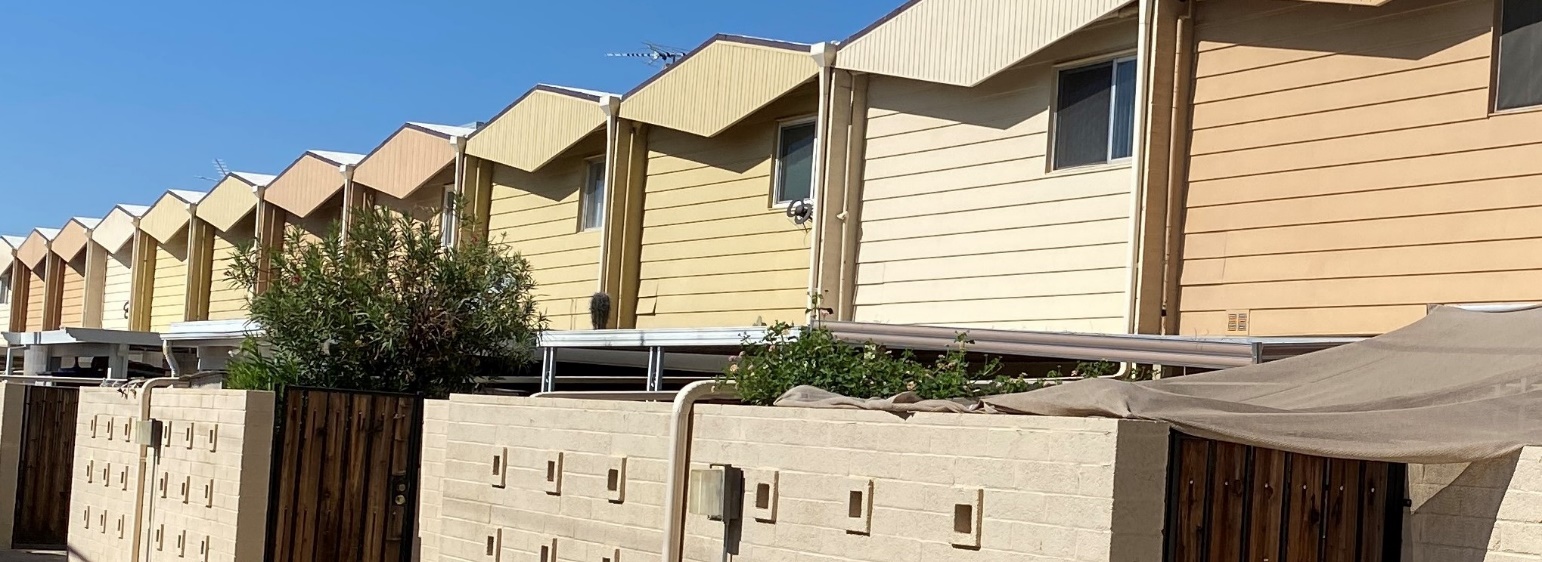
What was the top priority made by the client?
The top priority was to correct the peeling and rusting issues in order to restore the property to be properly repainted.
The property manager commended us for our thorough communication with him and the residents. We told him what we would be doing, and when we would do it. The residents appreciated that we were polite, that we were respectful of their homes and their privacy, and that we kept the property clean throughout the duration of the project. The best indicator of the quality of the crew’s effort was how many times they were offered sandwiches and cookies by the residents.
For more information call us or request a free estimate.


